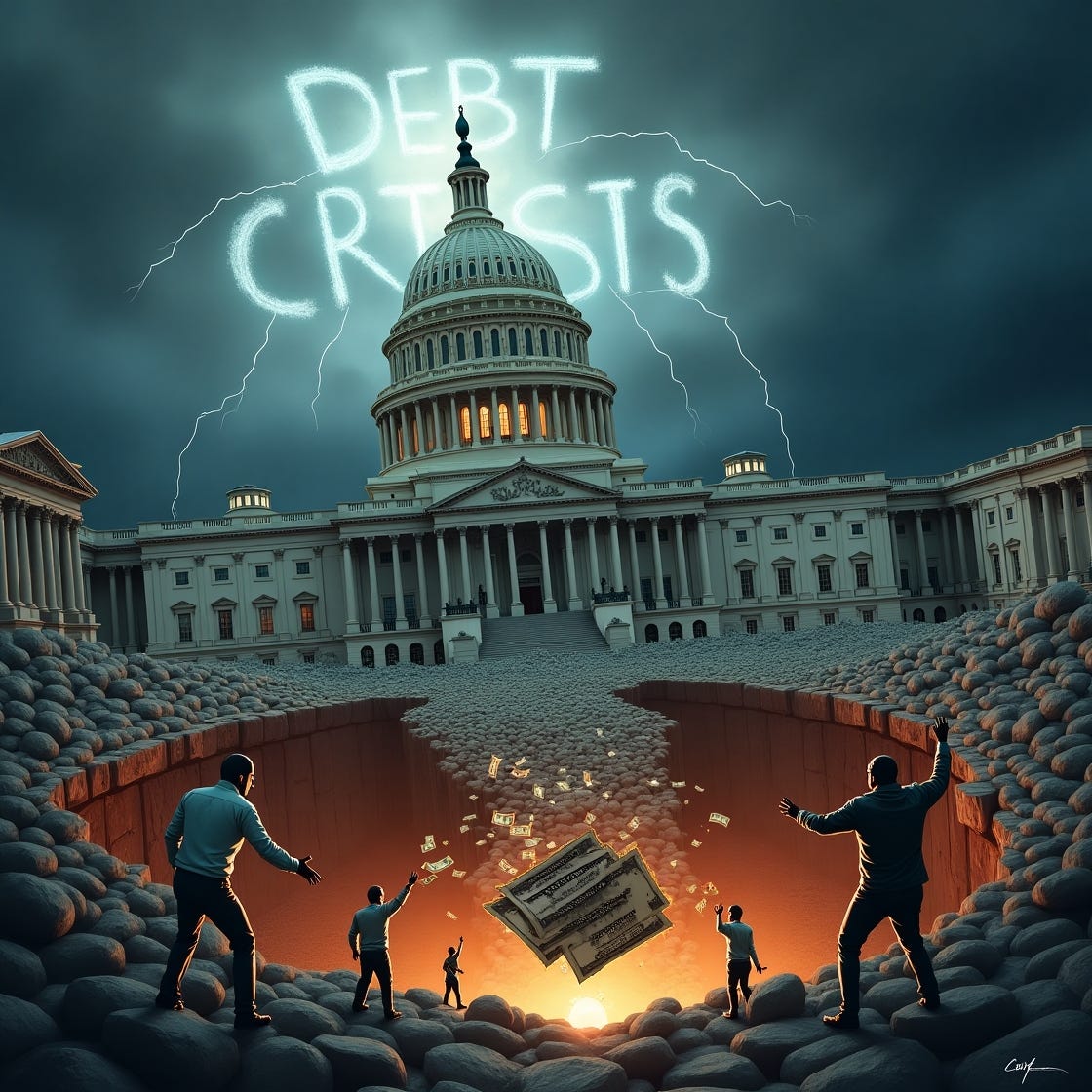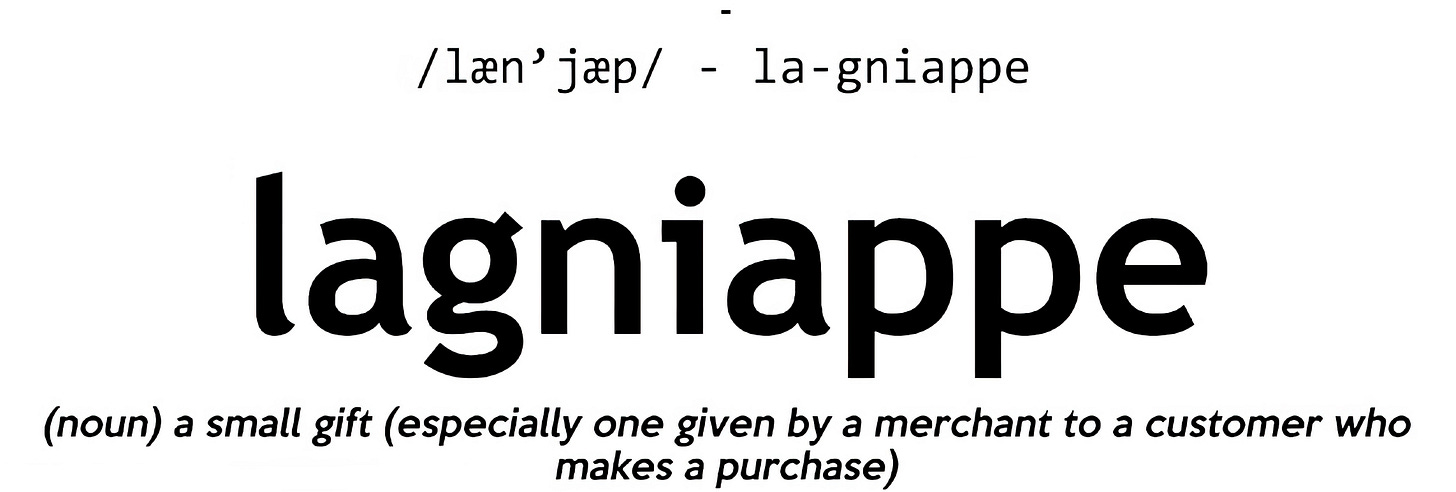America’s Financial Free Fall: How Political Dysfunction and Reckless Tax Cuts Just Cost the U.S. Its Last Triple-A Rating
Moody’s historic downgrade exposes a nation drowning in debt... while Washington keeps digging the hole deeper. Will investors finally revolt?
The Final Nail in the Coffin: U.S. Loses Last Triple-A Credit Rating as Debt Crisis Spirals
For the first time in over a century, Moody’s has stripped the United States of its pristine AAA credit rating, downgrading the nation to Aa1—a symbolic and financial reckoning decades in the making.
This isn’t just another economic headline. It’s a five-alarm fire for the world’s largest economy.
With this move, all three major credit agencies—Moody’s, Fitch, and S&P—have now demoted U.S. debt, signaling a collapse of confidence in Washington’s ability to rein in reckless spending, manage ballooning deficits, or even maintain basic fiscal sanity.
And the timing couldn’t be more damning.
Just hours before Moody’s dropped its bombshell, President Donald Trump was pressuring Republicans on the Hill to push through a 3.8 trillion dollar tax cut package that would explode the deficit further, even as the national debt soars past $36 trillion.
This isn’t just negligence. It’s sabotage.
Why This Downgrade Is Different—And Why It Should Terrify You
Past downgrades (S&P in 2011, Fitch in 2023) were shrugged off. The dollar remained strong. Treasury bonds stayed the bedrock of global finance.
But this time, the cracks are too deep to ignore.
Moody’s didn’t mince words:
“Successive U.S. administrations and Congress have failed to agree on measures to reverse the trend of large annual fiscal deficits and growing interest costs.”
Translation: Neither party has the guts to fix this.
And now, the consequences are here:
Higher borrowing costs for mortgages, car loans, and credit cards
A weaker dollar, fueling inflation even further
A potential bond market revolt, where investors demand higher yields to hold U.S. debt
Worse? We’re doing this to ourselves.
While other nations tighten belts, Washington’s answer is more tax cuts for the wealthy, more deficit spending, and zero serious reforms to Social Security and Medicare—two programs racing toward insolvency.
The Trump-Biden Blame Game… And Why Both Are Guilty
The White House was quick to deflect.
Kush Desai, a Trump spokesperson, blamed the downgrade on “Biden’s mess”—ignoring Trump’s own $3.8 trillion tax cut push was a key factor in Moody’s decision.
But let’s be real: This is a bipartisan failure.
Trump’s 2017 tax cuts blew a $2 trillion hole in the budget.
Biden’s spending sprees added trillions more.
Congress—under both parties—kept kicking the can, refusing to reform entitlements or raise taxes to match spending.
Now, the bill is due.
The Bond Vigilantes Are Coming—And They’re Pissed
Wall Street has a name for investors who punish reckless governments by dumping their debt: bond vigilantes.
And they’re already circling.
Treasury yields have surged, with the 30-year briefly hitting 5% this week.
If this continues, the U.S. could face a debt spiral—where higher interest payments force even more borrowing, leading to even higher rates.
Andrew Brenner, NatAlliance Securities:
“We have warned that the bond vigilantes were teeing up for an event to move against Treasuries. This would qualify as a catalyst.”
Translation: Sunday night’s market open could be ugly.
What Happens Next? (Spoiler: Nothing Good)
History says Washington won’t change.
After past downgrades, Congress did nothing meaningful—just more tax cuts, more spending, more debt.
But this time, the world is watching.
China, Japan, and Europe hold trillions in U.S. debt. If they lose faith, the dollar’s dominance could crumble.
And if Trump’s tax cuts pass? Forget Aa1—the next stop is Aa2.
The Bottom Line: America Is Out of Time
This isn’t just about credit ratings. It’s about whether the U.S. can still call itself the world’s financial superpower.
Right now, the answer is looking shaky.
Final Thought:
The downgrade is a warning shot.
Will Washington listen—or will it keep driving the economy off a cliff?
Stay tuned. The real chaos starts Sunday night.
Here are some news, analysis, and opinion pieces:
Moody's downgrade explained: Why the U.S. credit rating was cut | Fingerlakes1.com: https://www.fingerlakes1.com/2025/05/17/moody-downgrade-credit-rating-explained/ - This article directly addresses the Moody's downgrade, explaining the reasons behind it, the potential impacts, and the political backdrop. It corroborates the blog post's central claim and provides further details on the agency's rationale, including persistent deficits, rising interest costs, and political gridlock.
Moody's strips US government of top credit rating | Debt News | Al Jazeera: https://www.aljazeera.com/economy/2025/5/16/moodys-strips-us-government-of-top-credit-rating - Al Jazeera's coverage confirms the downgrade and highlights Moody's concerns about the failure of successive administrations to control rising debt. It also notes the potential complications for President Trump's tax cut plans and the likely impact on global markets.
Moody's strips US of top credit rating: What the downgrade means for your wallet | livenowfox.com: https://www.livenowfox.com/news/us-credit-rating-downgrade-moody - This piece analyzes the implications of the downgrade for consumers, including potential increases in borrowing costs for mortgages, credit cards, and business loans. It also provides context by mentioning the previous downgrades by S&P and Fitch.
Moody's downgrades US credit rating citing rising debt - BBC News: https://www.bbc.com/news/articles/c4ge0xk4ld1o - The BBC's report focuses on Moody's concerns regarding the U.S. government's ability to repay its debt and the failure to reverse ballooning deficits and interest costs. It also includes the White House's response and notes the historical context of Moody's holding a perfect rating for the US since 1917.
US Completely Loses Perfect Credit Rating for First Time in Over a Century - Newsweek: https://www.newsweek.com/moodys-us-credit-rating-negative-2073510 - Newsweek emphasizes this downgrade means the U.S. no longer has a top-tier rating from any major agency for the first time in over a century. It details Moody's projections for rising deficits and the historical context of previous downgrades.
6-Month Check-Up on FY 2025 Budget Vital Signs - EPIC for America: https://epicforamerica.org/federal-budget/6-month-check-up-on-fy-2025-budget-vital-signs/ - This analysis of the FY 2025 budget highlights the significant deficit and the rising costs of interest payments, Social Security, and Medicare. It provides context for Moody's concerns about the long-term fiscal outlook.
Higher Treasury Yields Would Add Trillions to the Debt - Committee for a Responsible Federal Budget: https://www.crfb.org/blogs/higher-treasury-yields-would-add-trillions-debt - This piece discusses the potential consequences of rising Treasury yields, including increased borrowing costs for the government and the risk of a debt spiral. It supports concerns about the impact of fiscal irresponsibility on interest rates.
Q2 2025 U.S. economic outlook: Economic severance - FS Investments: https://fsinvestments.com/fs-insights/q2-2025-u-s-economic-outlook-economic-severance/ - This economic outlook discusses the uncertainty surrounding government policy and its potential impact on growth and inflation. It provides a broader economic context for the credit rating downgrade.
What are the risks of a rising federal debt? - Brookings Institution: https://www.brookings.edu/articles/what-are-the-risks-of-a-rising-federal-debt/ - This article analyzes the long-term risks associated with the growing national debt, including the potential for higher interest rates, reduced investment, and slower productivity growth, which aligns with the blog post's warnings.
Political Polarization and Finance - Harvard Business School: https://www.hbs.edu/ris/Publication%20Files/25-002_96029466-ca86-43cb-9962-489d77280c62.pdf - This academic paper discusses the increasing political polarization in the U.S. and its influence on financial decisions. It provides context for the bipartisan fiscal failure and political gridlock as contributing factors to the fiscal situation.
.






